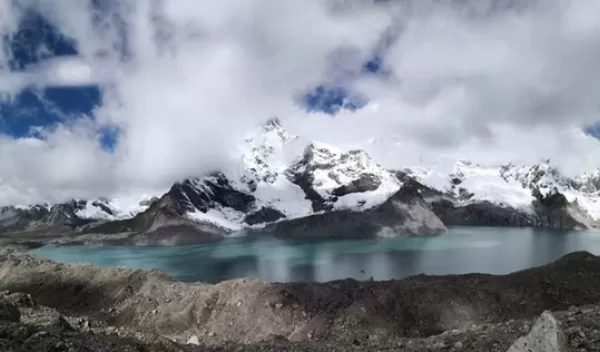
Hidden ice melt in Himalayan glaciers
A new study reveals that the mass loss of lake-terminating glaciers in the Great Himalayas has been significantly underestimated due to the inability of satellites to see glacier changes occurring underwater. That has implications for projecting glacier disappearance and availability of water resources.
The research, which combines multi-temporal satellite data with bathymetric measurements, offers new insights into the growing issue of subaqueous mass loss in the Himalayas.
Published in Nature Geoscience, the study was supported in part by the U.S. National Science Foundation and conducted by an international team of researchers, including from Carnegie Mellon University. The research demonstrates that a previous assessment underestimated the total mass loss of lake-terminating glaciers in the Great Himalayas by 6.5%, with even greater losses in certain regions.
The most significant underestimation of 10% occurred in the central Himalayas, where glacial lake growth has been the most rapid. A particularly interesting case in this region is Galong Co lake, which was underestimated by 65%. The oversight was largely due to the limitations of satellite imaging in detecting underwater changes, the scientists say, which led to a knowledge gap in the understanding of the full extent of glacier loss.
From 2000 to 2020, glacial lakes in the region increased by 47% in number, 33% in area and 42% in volume. Previous studies did not consider this loss as the satellite data can only measure the lake water surface, not the ice underwater replaced by water.
The study highlights the need to understand the mechanisms driving glacier mass loss and the underestimated mass loss of lake-terminating glaciers globally, scientists say, estimated to be roughly 12% between 2000 and 2020.
"In the long run, we expect mass loss from lake-terminating glaciers to continue to be a major contributor to total mass loss throughout the twenty-first century, and glaciers with significant mass loss may disappear more rapidly compared to existing projections," says David Rounce, co-author of the study.
